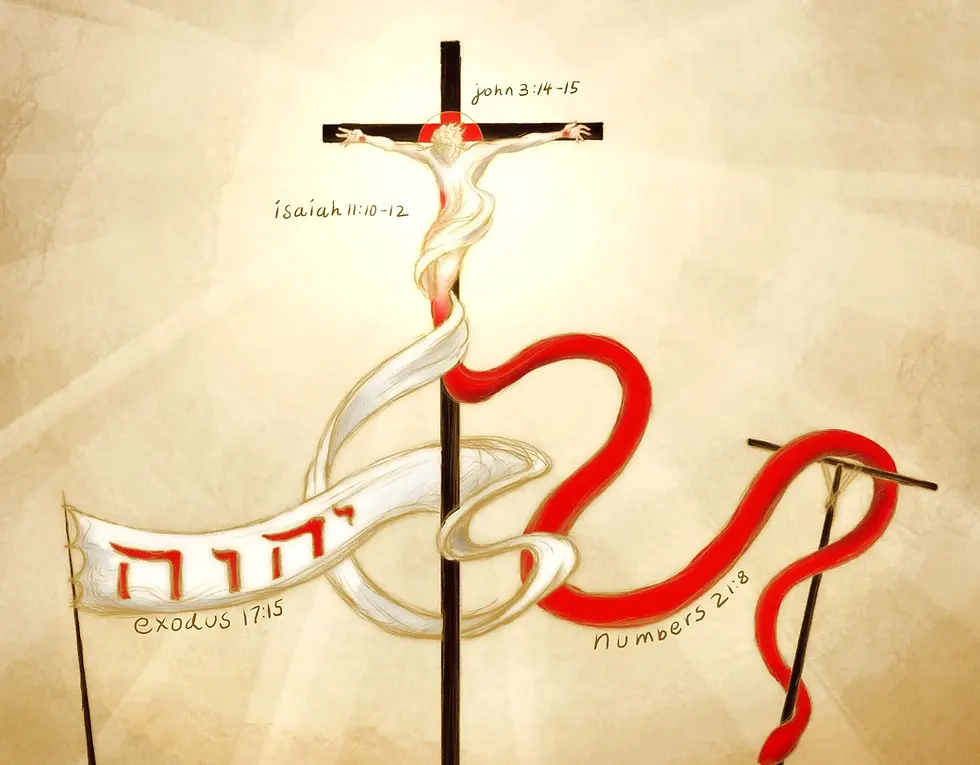A WITHDRAWER MEETS A SEEKER
- Charles
- 19 août 2023
- 4 min de lecture
Reflections for the Twentieth Sunday in Ordinary Time: Isaiah 56:1, 6-7, Romans 11:13-15, 29-32, & Matthew 15:21-28

The encounter between Jesus and the Canaanite woman happens at the crossroad of two varied paths. Faced with the rejection of the Jewish leadership (15:16-20), Jesus is “withdrawing to the region of Tyre and Sidon” in search of solitude to avoid conflict. Why is Jesus withdrawing in the first place? In the chapter preceding today’s gospel, Jesus had performed numerous miracles among his own countrymen. He fed five thousand men with five loaves and two fish, walked on the lake, and calmed the winds. And yet, he is met with rejection of the Jewish leadership and his own disciples’ lack of understanding. Dejected, he retreats to Tyre and Sidon in search of solitude to avoid conflict, escape attention and distance himself from the Pharisees who had just challenged him on the issue of religious cleanliness (Matthew 15:16-20). This path of withdrawal is hindered by a Gentile mother’s path of perseverant search for the healing of her daughter who is tormented by a demon. The Gospel is thus an encounter between two people in two different situations with two different motivations cross paths.
This fascinating crossing of paths is marked by some unusual role reversals. While the chosen people of God reject Jesus, a Gentile woman affirms him to be ‘Lord’ (thrice in the passage) and calls him by his messianic title ‘Son of David’. She pays him homage and kneels (proskyneo) before him, a gesture that could be interpreted as a posture of humility and worship. Secondly, while it is usually Jesus who goes in search of the lost sheep, here is a Canaanite woman pursuing him persistently, only to be met with the Good Shepherd’s insensitivity. The Canaanite mother faces three obstacles: a. The obstacle of silence: “Jesus did not say a word in answer to her”; b. The obstacle of contempt: Jesus' disciples tell him, "Send her away, for she keeps calling out after us", perhaps meaning, give her what she wants so that she’ll leave us alone. c. The obstacle of humiliation: When Jesus finally engages her in conversation, she is told, “It is not right to take the children’s bread and toss it to the dogs”. The roles are so reversed, we are left confused. While the chosen people, the disciples, and even Jesus are pushed to the villain camp, the desperate Canaanite woman becomes the true hero of the story.

One question troubles us the most: why is Jesus so mean to her? Preachers have tried three main responses to ‘liberate’ Jesus from the villain camp. Let’s see if they hold water. 1. Some tell us Jesus was testing the woman’s faith. If that is the case, why did he not test the centurion who was also a gentile with a similar request to heal his servant/son? Why did Jesus willingly oblige to the centurion (“I will come and heal him”) while he is so dismissive of the woman? 2. Other interpreters try to soften Jesus’ tone claiming that the word “dog” used here could mean a “puppy.” To which, we ask, so what? Does calling a desperate mother a puppy make it any less insulting? 3. Commentators attribute Jesus’ apparent insensitivity to his mission strategy. Jesus is said to be reluctant to minister to her because he has been ‘sent’ to the children/lost sheep of the house of Israel. Despite their rejection, they remain the focus of his mission. The Gentiles have to wait for their turn. The root must be planted first before the mission can branch out. Even if this was truly the case, could Jesus not have treated her better and dismissed her with dignity?
Well, this Gospel is one concrete example of knowing the importance of the context to truly understand its meaning and appreciate its significance. Matthew is writing to a Church that is facing an enormous challenge: welcoming ‘pagans’ into a Christian community chiefly comprising Judeo-Christians of Hebrew origin, who still thought of themselves as part of ‘the chosen people’ and therefore reluctant to accept the Gentiles. Saint Paul, who identifies himself as the apostle of the Gentiles (second reading), speaks of a "wall of hatred" that caused a great deal of conflict. The obstacles that the Canaanite mother met with (silence, contempt, and humiliation) were also the obstacles facing the Gentiles of the Early Church. Jesus’ seeming insensitivity is actually an indicator of the historical animosities and considerable social barriers that existed between Jewish converts and Gentile converts.

It is in this context that Matthew reminds his community of the time when Jesus himself was confronted by the faith of someone from the pagan world. He wants to tell his community that just as Jesus discovered the ‘great faith’ of the woman through encounter and dialogue, they needed to let go of their exclusive identities to discover the richness of faith beyond their ethnic and social boundaries. Jesus’ transformation from ‘withdrawal’ to ‘ministry’ becomes a program for the Matthean Church to change its path from withdrawal to its exclusiveness to the mission of communion. The ‘conversion’ of Jesus enabled by the perseverance of the mother becomes a model for his Church’s conversion from silence to welcome, from contempt to admiration, from humiliation to mutual dignity, and from indifference to listening. Our Church of the third millennium continues to encounter the same challenges faced by the Canaanite mother and Matthew’s Church. Today’s liturgy obliges us to walk the path of encounter and dialogue to convert from our exclusive identities to embrace inclusivity that transcends all boundaries across caste, language, rites, and nationalities.




Commentaires